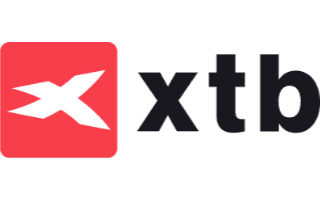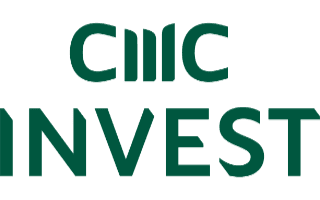The FTSE 250 and S&P 500 are both stock market indices that track a certain number of stocks in an exchange or country. The S&P 500 is 500 stocks on US exchanges, chosen by a committee. The FTSE 250 is the 250 stocks after the 100th stock on the London Stock Exchange when you order the companies on the exchange by their market capitalisation.
What’s the difference between the FTSE 250 and the S&P 500?
The S&P 500 and the FTSE 250 are collections of stocks from their respective exchanges – in the FTSE 250’s case, it’s a collection of stocks on the London Stock Exchange and in the S&P 500’s case, it’s a collection of US stocks.
Another difference is how each index is constructed. The stocks that make up the S&P 500 are hand-picked by the US Index Committee, which picks the leaders in 11 sectors. The FTSE 250 is constructed by data alone – companies need to have a premium listing of equity shares on the main market of the London Stock Exchange and must have a minimum free float of 10% (UK incorporated) or 25% (non-UK incorporated). The stocks are ordered by their market capitalisation – the top 100 stocks make up the FTSE 100 and the following 250 make up the FTSE 250.
List of top 10 stocks from each
FTSE 250
- Centrica
- Tritax
- Unite Group
- Harbour energy
- Convatec
- Easyjet
- F&C Investment
- Weir Group
- RIT Capital Partners
- TUI
S&P 500
- Apple
- Microsoft
- Amazon
- Meta
- Alphabet Inc A (Google)
- Apple
- Johnson & Johnson
- Berkshire Hathaway
- Visa
- Procter & Gamble
FTSE 250 vs S&P 500: Which is bigger?
The S&P 500 is made up of 500 stocks, while the FTSE 250 is just 250 stocks. The overall market capitalisation of the S&P 500 is significantly higher than that of the FTSE 250 because a lot of the companies in the FTSE 250 are smaller. The market cap of the S&P 500 is $36.7 trillion (£29.74 trillion), compared with the market cap of the FTSE 250, which is £419 billion.
FTSE 250 vs S&P 500: Which is worth more?
As we mentioned above, the S&P 500 is worth more than 70 times the value of the FTSE 250. It holds twice the number of stocks.
FTSE 250 vs S&P 500: Which is more diversified?
The S&P 500 has a better diversified set of stocks. It has a lot of technology stocks, making up around 15% of the index, but it’s well spread across a number of sectors. The FTSE 250 has a number of financial companies and a small number of health care, utilities and communication stocks.
If you’re looking for diversification, you might decide to invest in both indices. This gives you additional global exposure.
FTSE250 vs S&P 500 chart
Platforms where you can invest in the FTSE 250 and the S&P 500
These trading apps allow you to invest in companies within the indices directly or to invest in funds or ETFs.
What’s the best FTSE 250 and S&P 500 index fund?
Here are some of the best performing FTSE 250 and S&P 500 funds according to justETF:
| Fund | Icon | 5-year performance (to February 2024) | 1-year performance (to February 2024) | Link to invest |
|---|---|---|---|---|
| Vanguard FTSE 250 UCITS ETF Distributing (VMID) |  | 15.50% | -0.37% | Invest with XTBCapital at risk |
| Invesco FTSE 250 UCITS ETF (S250) |  | 14.69% | -0.68% | Capital at risk |
| Xtrackers FTSE 250 UCITS ETF 1D (XMCX) | 14.21% | -0.93% | Capital at risk | |
| iShares FTSE 250 UCITS ETF (MIDD) |  | 13.46% | -0.89% | Invest with eToroCapital at risk |
| HSBC FTSE 250 UCITS ETF GBP (HMCX) |  | 13.00% | -1.29% | Capital at risk |
| Fund | Icon | 5-year performance (to February 2024) | 1-year performance (to February 2024) | Link to invest |
|---|---|---|---|---|
| Invesco S&P 500 (SPXP) |  | 100.34% | 16.39% | Invest with XTBCapital at risk |
| Xtrackers S&P 500 Swap (XSPX) | 99.39% | 15.91% | Invest with XTBCapital at risk | |
| Vanguard S&P 500 (VUSA) |  | 97.44% | 15.78% | Invest with XTBCapital at risk |
| iShares Core S&P 500 (CSP1) |  | 97.42% | 15.78% | Invest with XTBCapital at risk |
| SPDR S&P 500 ETF (SPX5) |  | 97.09% | 15.74% | Capital at risk |
| HSBC S&P 500 (HSPX) |  | 96.87% | 15.39% | Capital at risk |
All investing should be regarded as longer term. The value of your investments can go up and down, and you may get back less than you invest. Past performance is no guarantee of future results. If you’re not sure which investments are right for you, please seek out a financial adviser. Capital at risk.
Is it better to invest in the FTSE 250 or the S&P 500?
![]()
The S&P 500 has performed better historically, but that doesn’t mean that it’s going to do well in the future. But why choose? Investing in both the FTSE 250 and the S&P 500 would give you diversification across lots of sectors as well as let you invest in lots of different-sized companies across the globe.
If you do wish to choose between them, choose one that’s got exposure to the types of stocks you’re interested in – the FTSE 250 has a lot of defensive stocks, like consumer staples and financial services, while the S&P 500 has a lot of technology, industrial and healthcare stocks.
What are the top holdings in the FTSE 250 and S&P 500?
| FTSE 250 | S&P 500 | ||||
|---|---|---|---|---|---|
 | Centrica |  | Apple | ||
 | Tritax |  | Microsoft | ||
 | Unite Group |  | Amazon | ||
 | Harbour Energy |  | Facebook Inc A | ||
 | Convatec |  | Alphabet Inc A (Google) |
How to invest in the FTSE 250 and S&P 500
- Find an FTSE 250 or S&P 500 ETF, index fund or mutual fund. Some index funds track the performance of all stocks on the index, whereas others only track a certain number of stocks or are weighted more towards specific stocks. You should select the fund that best suits your investment goals.
- Open a share-trading account. In order to invest in the funds, you’ll need to open a trading account with a broker or platform. Keep in mind that some index funds may only be available on certain brokerages or platforms. The providers in our comparison table below let you invest in US shares. We’ve listed some index funds below that are listed on the London Stock Exchange (LSE).
- Deposit funds. You’ll need to deposit funds into your account to begin trading. Some brokers may charge you deposit fees, or you may need to pay a forex fee in order for your pounds to be converted into US dollars.
- Buy the index fund. Once your money has been deposited, you can then buy the index fund. You’ll generally pay a small annual fee to invest in an ETF or index fund.
Compare FTSE 250 and S&P 500 trading platforms
These trading apps allow you to invest in companies within the indices directly or to invest in funds and ETFs.
Bottom line
The FTSE 250 and the S&P 500 are both popular stock market indices to invest in. Investors typically choose to invest in an index with an index fund. These are designed to reflect the performance of the index, either by replicating it or by choosing similar stocks, or a mixture of the two.
Whichever you choose, you’ll get a well-diversified range of shares across a lot of sectors and investment types.
All investing should be regarded as longer term. The value of your investments can go up and down, and you may get back less than you invest. Past performance is no guarantee of future results. If you’re not sure which investments are right for you, please seek out a financial adviser. Capital at risk.
More guides on Finder
-
How to buy SPDR FTSE UK All Share UCITS ETF Acc
Ever wondered how to invest in FTAL ETF? Learn more about it now and find out where you can invest in it. Compare ETF brokers to start investing today.
-
How to buy Franklin FTSE United Kingdom ETF
Ever wondered how to invest in FLGB ETF? Learn more about it now and find out where you can invest in it. Compare ETF brokers to start investing today.
-
How to buy HSBC FTSE 100 UCITS ETF
Ever wondered how to invest in HUKX ETF? Learn more about it now and find out where you can invest in it. Compare ETF brokers to start investing today.
-
How to buy Flutter Entertainment shares
Thinking about buying shares in Flutter Entertainment? We explain how to do it and compare a range of providers who will give you access to global markets.
-
How to buy Dettol shares | 4379p
Sales of Reckitt Bencksier products like Dettol have risen due to coronavirus. Here’s how you can invest in Dettol, by buying Reckitt Benckiser shares.
-
How to buy AT&T shares
Ever wondered how to buy shares in AT&T? We explain how and compare a range of providers that can give you access to many brands, including AT&T.
-
How to buy Wincanton shares
Ever wondered how to buy shares in Wincanton? We explain how and compare a range of providers that can give you access to many brands, including Wincanton.
-
How to buy United Utilities Group shares
Ever wondered how to buy shares in United Utilities? We explain how and compare a range of providers that can give you access to many brands, including United Utilities.
-
How to buy Relx shares
Find out how to buy shares in RELX, see its share prices over the last three months and check out our must-do checklist if you’re looking to invest.
-
How to buy Reach shares
Ever wondered how to buy shares in Reach? We explain how and compare a range of providers that can give you access to many brands, including Reach.


